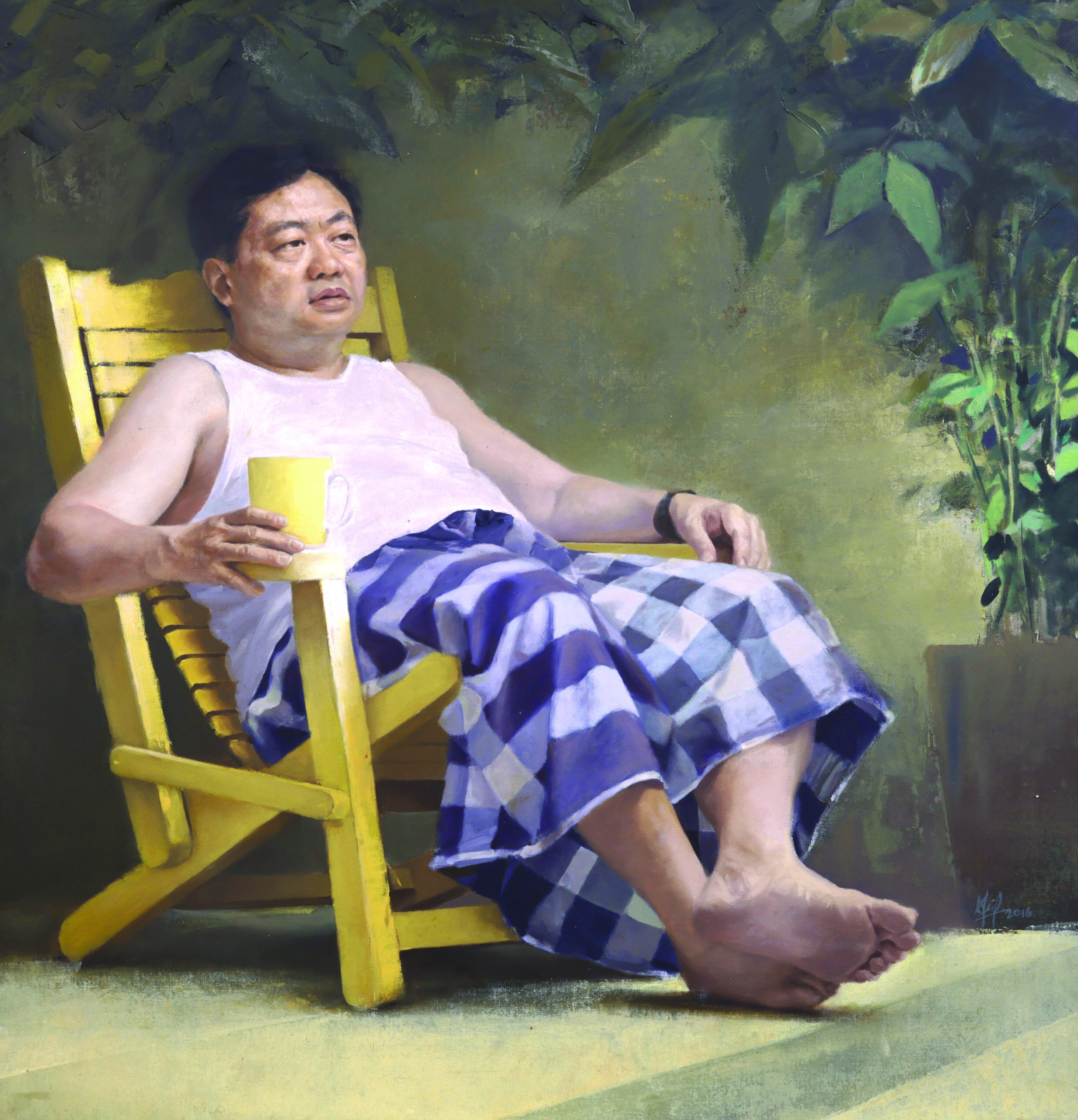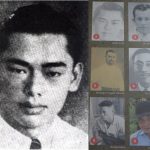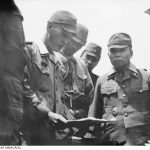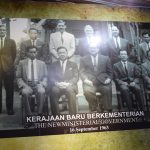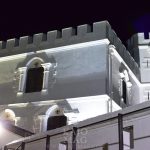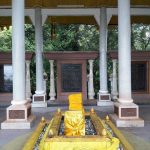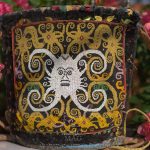If you web-searched ‘ Food to eat in Kuching’ or ‘Kuching Food Guide’ or ‘Food to Try in Kuching’ or ‘What food is famous in Kuching’, honestly the results are pretty much the same.
Here at KajoMag, we want you to take your gastronomic adventure in Kuching (Unesco Creative City of Gastronomy since 2021!) to another level and not just go through the food list halfheartedly.
So how about enjoying the best food that Kuching has to offer alphabetically?
This is our pick of what to eat in Kuching from A to Z (a non-halal version):
A is for ABC
ABC, also known as ais kacang, is one of the many ways Kuchingites use to escape from the tropical heat.
It traditionally consists of shaved ice, red beans, cendol, grass jelly with evaporated milk or coconut milk drizzled on top.
If you have no idea where to have one, here are some of KajoMag’s suggestions.
B is for Beef Noodle
Kuching is known for its own version of beef noodle or mee sapi.
This noodle dish is served with been sprouts and beef slices on top as well as a bowl of hearty beef-based soup.
Some of the best places to have that satisfying bowl of beef noodle are Ah Mui Beef Noodle and Green Hill Corner Hawker Centre.
C is for (Salad) Chicken Rice
Do not be fooled by the name of this dish and expect a bowl full of greens.
Sarawak’s version of salad chicken rice is rice served with fried chicken.
The ‘salad’ part is the pink-coloured dressing made from mayonnaise mixed with tomato sauce.
The original version of this dish also came with baked beans.
Nowadays, the common version of salad chicken rice is with mayonnaise drizzled on top of the fried chicken and tomato sauce on the side.
The most popular place to have a plate of this is none other than KEN Salad Chicken Rice on Jalan Pending.
D is for Dabai
Dabai (Canarium odontophyllum) is an indigenous seasonal fruit that can only be found in Sarawak.
Many call it the Sarawak olive because they look similar.
If you are not in town during dabai season, no worries. You can still enjoy this fruit but in another form.
Nasi goreng dabai or dabai fried rice is one of the ways to enjoy the fruit all year round since it is made from salted dabai.
E is for Ensabi
Ensabi is a local mustard green which is known for its distinct bitter taste.
It is commonly prepared by stir-frying it with garlic and anchovies with salt to taste.
Sarawakians love the preserved version of it called kasam ensabi.
From a simple dish that the folks at the longhouse enjoy, now it has found its way to Kuching hawker stalls selling indigenous food.
One of these stall is as at Langkau Arau Rumah Asap Dayak.
F is for Fried Midin

Another must-try vegetable is Sarawak is midin (Stenochlaena palustris).
It is a type of fern usually prepared by frying with garlic or shrimp paste (belacan).
Have it with rice and some protein such as chicken or pork, and voila! You will have the perfect plate for lunch.
G is for Gula Apong Ice-cream
Do not think about leaving Kuching without giving this a try.
Gula Apong Ice-cream is one of many must-try desserts when you are in town.
It is basically vanilla ice-cream topped with gula apong, a Sarawak palm sugar.
H is for Hot bowl of Terung Dayak Soup

Terung Dayak or terung asam is a type of eggplant which is commonly found in Sarawakian cuisine.
They are usually cut into quarters and cooked with or without their seeds.
Most people do not remove the skin because it comes off easily when cooked.
One of the best ways to have it is to cook the eggplant in soup with pork or smoked fish.
I is for Ikan Terubuk Masin
Ikan terubuk masin is salted toli shad or Chinese herring.
It is one of highly prized fish among Sarawakians.
Nowadays it has become one of the must-buy food souvenirs among tourists who came to Sarawak.
Whether you have it here right on site in Sarawak or bring it back home to savour, this fish is one of many Sarawakian foods you must eat in Kuching.
J is for Jani
You cannot come to Sarawak and not pick some of the local languages. This largest state of Malaysia has more than 40 sub-ethnic group, each with its own distinct language.
Here at KajoMag, we want to teach you the Iban word ‘jani’ which means pig.
While the African Americans are known to have their cookouts featuring a menu of soul food, the Iban people have always love to gather among family and friends to barbeque and drinking some beers.
And a typical Iban or even Dayak barbecue is incomplete without jani or pork.
You can have the barbecued pork with rice or on its own, it doesn’t matter as long as you have a can of cold beer to wash it down.
No invites to a BBQ? No worries, you still can have it in Kuching.
The best places to have Dayak-style barbecued pork are at Rumah Asap Tabuan Dayak and Langkau Arau Rumah Asap Dayak.
While you are there, don’t forget to order some barbecued pork intestines.
K is for Kueh chap

Speaking of pork intestines, here is a dish you must have in Kuching if you love having some pig’s innards.
Originating from Teochew cuisine, this dish consists of flat, broad rice sheets served in a soup made with dark soy sauce along with an assortment of pork cuts.
You can have early in the morning for breakfast or late at night for supper, it doesn’t matter.
Some of the places that served best kueh chap in town are Lao Ya Keng Food Court at Carpenter Street and 3rd Mile Wet Market Food Court.
L is for Laksa Sarawak
A Twitter user in 2012 once asked the late celebrity chef Anthony Bourdain to settle the score on who has the best laksa? Penang, Sarawak, Johore or Singapore?
Bourdain tweeted back only one word ‘Sarawak’ so sorry not sorry Penangites, Johoreans and Singaporeans.
A classic bowl of Laksa Sarawak is made of rice vermicelli served in spiced coconut broth with shredded chicken, shredded omelette, bean sprouts, prawns and coriander.
Some of the famous places in Kuching to have a taste of this dish are Choon Hui Cafe and Golden Arch Cafe.
M is for Mee Kolo

Never ever ask a group of Kuchingites on where is the best Mee Kolo or Kolo Mee especially on social media platforms, you might accidentally trigger a debate as heated as the Taiwan parliament.
A kolo mee is springy egg noodles tossed in a sweet and savoury shallot, lard and vinegar dressing. Kuching’s most popular variant is the kolo mee merah (red). It uses oil from cooking char siu for that extra flavour as well as the red colouring.
Kuchingites are proud of their kolo mee and sometimes can be very defensive on which stall offers the best.
Most of the time, nostalgia is a powerful ingredient and Kuchingites tend to pick the best based on where they had it as a child.
For instance, someone who grew up in the 3rd Mile area would probably choose the stall on the first floor of 3rd Mile Wet Market to have the best kolo mee.
Regardless, there is one thing for sure. A first-time visitor to Kuching cannot leave the city without having this bowl of springy noodles.
N is for Nasi Aruk
For a dose of traditional Sarawakian Malay food in your gastronomic adventure in Kuching, do give nasi aruk a try.
Basic nasi aruk is made from rice, garlic, onion and anchovies.
What makes it different from the typical fried rice, nasi aruk does not use any oil to fry the rice and it requires a longer frying time resulting in a more smoky flavour in the rice.
O is for Oyster Pancake
Sometimes also known as oyster omellete, this dish is best to have while it is still hot and crispy.
It is one of the must-ordered dishes at any seafood or Chinese restaurants in Kuching.
But you can still have it as a snack on a late night out with friends.
The dish is round and crispy pancake with oysters cooked with it.
P is for Pansuh

Originally an Iban dish, pansuh is food that is cooked in bamboo.
Manok pansuh is chicken cooked in bamboo with ginger, lemongrass and tapioca leaves. The bamboo is then roasted over a fire.
A dish that was common in the longhouses where bamboo is easily found, has now made its way to food courts and restaurants.
Q is for Qing Mian or Green Noodle
Qing Mian is green noodle in Mandarin. This noodle dish is more widely known as spinach noodle in which the noodle gained its colour from.
The unique thing about this noodle dish is that every stall that sells it has its own recipe.
Some serve the noodle with pork and others with beef.
Chong Chon Green Noodle for instance is served with beef while the one at ABC Food Centre comes with minced pork.
R is for Roti Kompia
Roti means bread in Malay and this is the only bread on the list.
It is made with lard, salt and flour.
One can enjoy it just like that or with savoury minced pork as its filling; either way is equally delicious.
S is for Sarawak Three Layer Tea

Widely known as Teh C Peng Special, this is perhaps the most popular tea beverage in Sarawak.
The three layers part of the drink come from tea, evaporated milk and gula apong (palm sugar).
This is one of many prides of Kuching since it is originally invented right here in this city.
T is for Tomato Crispy Mee
Here is another unique Sarawak dish for you to try in Kuching.
It is deep-fried noodle served with sweet and sour tomato gravy with vegetables and sliced chicken or pork on top.
U is for Umai

This popular traditional dish is a traditional food of the Melanau people.
It is consists of sliced raw fish mixed with onions, chillies, vinegar, salt and lime juice.
The dish is similar to Latin American ceviche and the Filipino kinilaw.
V is for Vermicelli Noodle With Shrimp Paste aka Belacan Beehoon
The list of ingredients that make up of this dish doesn’t make sense if you just go through it one by one.
But if you actually sit down and enjoy it, this dish does make sense.
Imagine rice vermicelli served in a dressing made from belacan (shrimp paste), chilli, tamarind and dried shrimp.
On top of it, there are cuttlefish, cucumber, bean sprouts and century egg.
W is for White Lady
Here is another source of pride of Kuchingites, the White Lady.
It is a dessert-like beverage made from evaporated milk, mango juice, longan and pineapple.
Some of the places where you can have a glass of the White Lady are Old Rex Cucur Udang Cafe and Swee Kang Ais Kacang.
X is for Xiu Mai Kuching style, Sio bee
Sio bee is Kuching’s interpretation of xiu mai or siu mai.
Unlike siu mai that contains both pork and shrimp, sio bee contains only pork inside.
Y is for Yong Tao Foo
Yong tao foo is a Hakka dish consisting of tofu filled with ground meat mixture.
The term ‘yong tao foo’ is also used to describe a clear soup dish with various forms of tofu stuffed ingredients such as bittergourd and ladies fingers.
The soup can include other ingredients such as fish balls, crab sticks and vegetables like bak choy and white Chinese cabbage.
Here in Kuching, a yong tao foo stall sometimes comes in a buffet-style where you can pick your ingredients to make up your soup.
Z is for Zao Cai Fen Gan and other Foochow foods
While Foochow food is more associated with Sibu town, you can find them here in Kuching city.
One of them is definitely Zao Cai Fen Gan or Zao Cai Hong Ngan. It is rice noodle cooked with preserved mustard greens.
The best part is you can have either dry or soup version of this dish. Both versions are equally delicious.
KajoMag’s recommended place to have this is at Mee Kwong Cafe.
Other Foochow dishes that can be found in Kuching are kampua, ding bian hu and mee sua.










